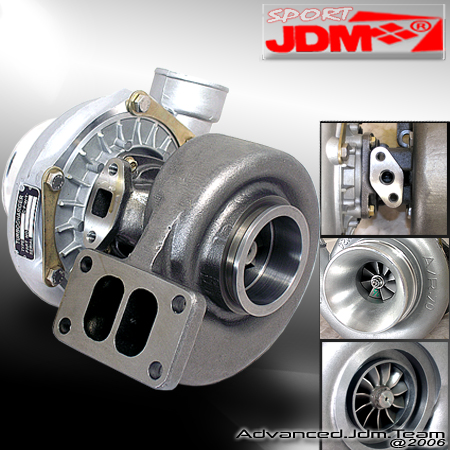First OFFICIAL TWINCHARGED M20 BUILD
Collapse
X
-
was browsing your blog and was looking at the supercharger build. where did you get the serp pulley that goes on the crank? im going to build a supercharger kit and that seems to be the buggest hurdle, parts wise -
So you decided supercharger will feed the turbo right?
Also what are the specs on your turbo? I will have a very similar setup on a 3.0 stroker setup once I get it running right. Same manifold, same exhaust, same intercooler, I just have to decide on fuel management.
The turbo I have is similar but was probably an ebay special as the company is 'JDM Sport' and its called a 'T70'. I'm trying to compare it to something and I think its a bit smaller than a garrett GT35R. Probably similar to the turbo you got. Specs are:
T70 Turbocharger
Manufacturer - JDM Sport
Ideal for large (3.0L-6.0L) displacement engines
Capable of 25-35 PSI output at peak power performance
Wet float bearing
External wastegate
Compressor Inlet = 4"
Intake (ID / OD) = 2" / 2.5"
Inducer = 56.2 MM
Exducer = 72.9 MM
Trim = 59
A/R = 0.70
Turbine Outlet = 2.5"
Turbo flange = T3 [twin entry divided flange]
Downpipe flange = 2.5" V-band
Inducer = 73.9 MM
Exducer = 58.3 MM
Trim = 62
A/R = 0.84
Oil cool system
Oil feed = T3
Oil return = T3

Hey I decided to have the turbo feed the blower. But doing it this way the blower will continue to do its job with low end grunt and with the extra 1L of displacement spool that turbo a lot faster. I was told the difference between the GT35 and GT35R is the later is ball-bearing same size. AR70 same as this turbo.Leave a comment:
-
So you decided supercharger will feed the turbo right?
Also what are the specs on your turbo? I will have a very similar setup on a 3.0 stroker setup once I get it running right. Same manifold, same exhaust, same intercooler, I just have to decide on fuel management.
The turbo I have is similar but was probably an ebay special as the company is 'JDM Sport' and its called a 'T70'. I'm trying to compare it to something and I think its a bit smaller than a garrett GT35R. Probably similar to the turbo you got. Specs are:
T70 Turbocharger
Manufacturer - JDM Sport
Ideal for large (3.0L-6.0L) displacement engines
Capable of 25-35 PSI output at peak power performance
Wet float bearing
External wastegate
Compressor Inlet = 4"
Intake (ID / OD) = 2" / 2.5"
Inducer = 56.2 MM
Exducer = 72.9 MM
Trim = 59
A/R = 0.70
Turbine Outlet = 2.5"
Turbo flange = T3 [twin entry divided flange]
Downpipe flange = 2.5" V-band
Inducer = 73.9 MM
Exducer = 58.3 MM
Trim = 62
A/R = 0.84
Oil cool system
Oil feed = T3
Oil return = T3

Leave a comment:
-
I cant wait to have it all done but winter is long here my car wont see the road until end of april 2013 :( and now I have all the turbo parts so I have to build the car and make the fun build part last until then :)
I found this on the mustang hellion Twincharged cars... not helping my desire to finish it now and drive it!!
Q: How Come the Turbos Alone Will Make More Peak Power at the Same Boost Level Then?
A: As previously stated, the turbochargers are the more efficient power adder (supercharger vs. turbo). In the compound setups, the turbo boost level is limited because the air will be compressed again by the supercharger. Therefor, 20psi of compounded boost will only be about 8 psi from the turbos and 8-9 psi from the supercharger. This means that you will see peak power characteristics that reflect the amount of turbo boost present, with low-end power characteristics of a supercharger. The total boost number is somewhat irrelevant. If we use the turbos only to create 20psi, they are in a more efficient airflow range, but will lack the low-end power of the supercharger. Also, the turbo combinations with lack the mechanical losses, however minimal they may be, which will lead to slightly higher peak power numbers.
Q: What are the Real Benefits of the Compound Boost Setup?
A: The real world benefit of a compound boost setup is average power and driveability. With the compound setup, you can still have the instant boost and low-end grunt of a supercharger, but the addition of the turbochargers will allow for a much more efficient and powerful top-end. This is referred to as "power under the curve." The average amount of power that we are able to produce with the compound systems will provide better driveability while still producing hair-raising amounts of power. Here's a quick example of how to think about it:
Let's say that we have a car that makes 1,000 hp peak, but only makes 500 - 1,000 hp for around 3,000 rpm. Now, we have another car that makes 900 hp peak, but makes 500-900 hp for 5,000 rpm. If we use a linear progression of power to calculate the average power through 5,000 RPM, the second car in question would have an average power output of about 700 hp through 5,000 rpm, whereas the first car mentioned would only have an average output of about 550 - 600 hp through 5,000 rpm. Using this equation, the first car in question has a higher peak power output, however the second car will most likely out-accelerate it due to the fact that it makes more average power over the same RPM range.Last edited by Denny; 12-06-2012, 05:30 AM.Leave a comment:

Leave a comment: